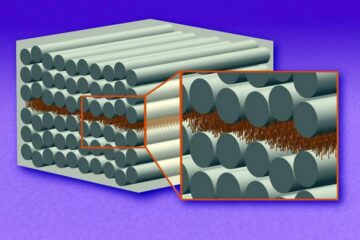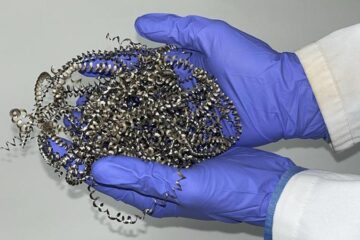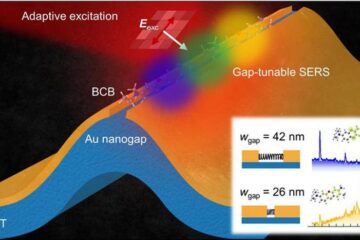Motorcycle right behind the racing cyclist can improve time in Giro prologue

This is an image of computer simulations with colors depicting different pressure levels. The motorcycle follower causes a reduction in the low pressure area behind the rider (red area), thereby reducing the aerodynamic drag. Credit: Eindhoven University of Technology
Research at TU Eindhoven, KU Leuven and the University of Liege has shown how a motorcyclist riding right behind a racing cyclist can reduce the air resistance for the cyclist by almost nine percent. In a time trial, such as this Friday's forthcoming prologue in the Giro (Tour of Italy) in Apeldoorn, this could mean a decisive advantage. The researchers advise the UCI (International Cycling Union) to extend the minimum distance between motorcycle and cyclist, also from a safety perspective, to 20 or 30 meters.
In cycling races there are many motorcycles present, for instance for reporters and photographers, often riding very close to the riders. The discussion concerning the number of motorcycles in the race has once again been ignited by several incidents involving motorcycles, including the recent death of the 25 year-old Belgian cyclist Antoine Demoitié following a collision with a motorcycle in the Gent-Wevelgem race. Research by TU Eindhoven, KU Leuven and the University of Liege, supervised by TU/e professor and keen cycling fan Bert Blocken, reveals that motorcycles can also have a decisive role in the outcome of a race from an aerodynamic perspective.
Less air resistance
The researchers used computer simulations and wind tunnel measurements of scale models of a time trial rider and a motorcyclist to calculate that a motorcycle at a distance of 0.25 meter behind the cyclist can cut the air resistance by almost 9 percent. If there are three motorcycles, the reduction can be as much as 14 percent. Race pictures suggest that such short distances are certainly not uncommon in elite races.
Up to a minute gained
The researchers calculated the time that can be gained in a time trial for various distances between the cyclist and following motorcycle. Depending on how long a motorcycle rides behind the cyclist in a short time trial like the Giro prologue (9.8 kilometer), a few to several seconds can be gained. Time trials are often won by very narrow margins. In the longer time trials, the difference could be up to a minute.
Unprecedented research
Last year the TU/e researchers showed that a following car could give a rider a time advantage by driving close behind the rider. Now it appears that the aerodynamic benefit provided by a following motorcycle is even greater, mainly because motorcycles tend to ride much closer behind the cyclist. But now, for the first time, this 'following effect' of motorcycles and following vehicles has been investigated in detail. Evidence suggests that the effect is much greater than previously thought.
UCI must modify the rules
The researchers advise the UCI to modify the rules on motorcycles in cycling races not only from a safety perspective but also given the measured undesirable aerodynamic advantages that riders could gain. They are appealing for the regulatory ten meter distance to be increased to thirty meters and, moreover, to ensure there is compliance with this distance, something that almost never happens in reality. They join the riders in asking the UCI to take stricter action concerning in-race motorcycles.
Media Contact
All latest news from the category: Physics and Astronomy
This area deals with the fundamental laws and building blocks of nature and how they interact, the properties and the behavior of matter, and research into space and time and their structures.
innovations-report provides in-depth reports and articles on subjects such as astrophysics, laser technologies, nuclear, quantum, particle and solid-state physics, nanotechnologies, planetary research and findings (Mars, Venus) and developments related to the Hubble Telescope.
Newest articles

“Nanostitches” enable lighter and tougher composite materials
In research that may lead to next-generation airplanes and spacecraft, MIT engineers used carbon nanotubes to prevent cracking in multilayered composites. To save on fuel and reduce aircraft emissions, engineers…

Trash to treasure
Researchers turn metal waste into catalyst for hydrogen. Scientists have found a way to transform metal waste into a highly efficient catalyst to make hydrogen from water, a discovery that…

Real-time detection of infectious disease viruses
… by searching for molecular fingerprinting. A research team consisting of Professor Kyoung-Duck Park and Taeyoung Moon and Huitae Joo, PhD candidates, from the Department of Physics at Pohang University…





















